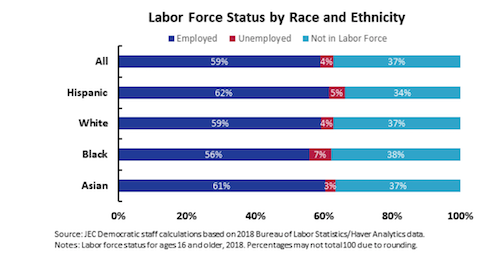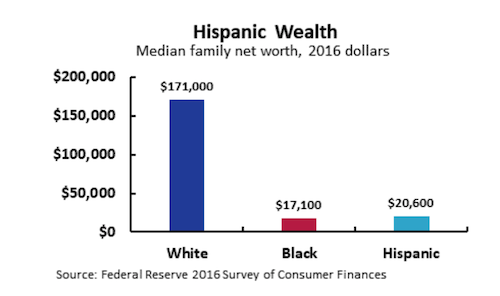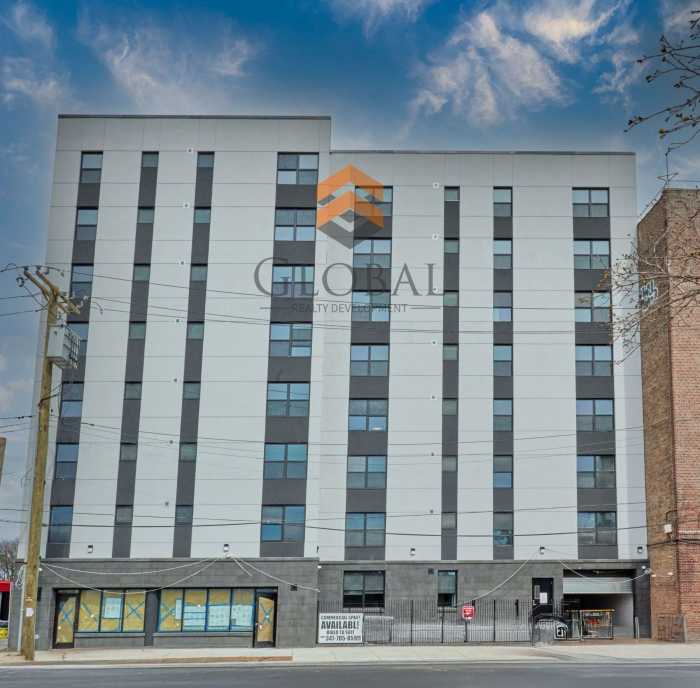Democrats and Republicans may continue to have a growing bitterness between them but there is at least one thing they seem to agree on:
While U.S. Latinos still lag behind their white counterparts in several key economic indicators, they are slowly becoming the driving force behind this country’s economy in terms of business startups, workforce and homeownership.
That according to a U.S. Congress Joint Economic Committee (JEC) report released last week. The JEC is a bipartisan joint House and Senate committee established as a part of the Employment Act of 1946, which deemed the committee responsible for reporting the current economic condition of the United States and for making suggestions for improvement to the economy.

“For too long, too little attention has been paid to the economic contributions of Latinos. This report helps dispel the fog of ignorance surrounding the fact that not only our future, but our present as well, depends upon Latino economic contributions to make America thrive,” said JEC Vice-Chair U. S. Rep. Carolyn Maloney (D-Greenpoint, Eastern Manhattan, Queens).
“Latinos are more likely to be in the workforce than the population as a whole. They are more likely to be entrepreneurs, as nearly one in four new businesses in this country are Latino-owned. These are but two examples demonstrating how our future economic success is created by Latinos in every part of the nation,” she added.
The study finds that the almost 60 million Latinos in the United States already account for $2.3 trillion in economic activity, which on its own would rank as the eighth largest economy in the world. The economic clout of Latinos is expected to rise as about one in four Americans will be of Latino or Hispanic heritage by 2060.
This increase – combined with high rates of labor force participation among Latinos, their relative youth and increased level of educational attainment – will be a key driver of overall U.S. economic growth. That will help offset downward pressures on the U.S. economy stemming from the rising number of retirements and plateauing labor force.
 In fact, the reports finds that Latinos are somewhat more likely to participate in the labor force than workers in other groups. In 2018, 67 percent of Hispanics were in the labor force, compared to 63 percent of whites and over 63 percent of blacks. The higher labor force participation rate in the Hispanic population, combined with the relative youth and expected increases in the population, suggest that the importance of the Hispanic workforce will continue to grow.
In fact, the reports finds that Latinos are somewhat more likely to participate in the labor force than workers in other groups. In 2018, 67 percent of Hispanics were in the labor force, compared to 63 percent of whites and over 63 percent of blacks. The higher labor force participation rate in the Hispanic population, combined with the relative youth and expected increases in the population, suggest that the importance of the Hispanic workforce will continue to grow.
That said, the report also finds Latinos still fare worse than their white counterparts on average with issues like employment, income, homeownership, and education.
 The median household income for Latinos is about 75 percent of what the white population makes. The median net worth of Hispanic households in 2016 was 1/8th the net worth of what households of white homeowners were worth. Even though Latinos have been gaining ground but are still struggling, the economy would be in bad shape without them.
The median household income for Latinos is about 75 percent of what the white population makes. The median net worth of Hispanic households in 2016 was 1/8th the net worth of what households of white homeowners were worth. Even though Latinos have been gaining ground but are still struggling, the economy would be in bad shape without them.
“Hispanics may play an outsized role because they are more likely than non-Hispanics to be working or seeking work and they are significantly more likely to be entrepreneurs,” according to the report.
Latinos are mostly concentrated in five states, and over 90 percent of them are in metropolitan areas. A new trend has more Latinos moving to other areas of the country like the South, where immigration increased by over 30 percent and is now similar to the West, where Latinos make up 39 percent of the population.
“Higher immigration levels and state-to-state migration of Latino workers is critical to the economy as a way to increase labor force participation rates, especially in newly developing rural areas,” according to the report.
Latino population growth as a whole is low because of the slowdown in immigration dating back to around 2008. In New York State, 17 percent of the population is made up of Latinos. Some states have populations as low as 4 percent like in Kentucky and as high as 45 percent in New Mexico. The New York-Northern New Jersey-Long Island population area has 4.5 million Latino residents.
Out of all American Hispanics, 62 percent are of Mexican origin, with Puerto Rican origins in second place with 9 percent of the population. There are about 45 million immigrants in America, and Latinos make up the largest immigrant group by representing almost half of all the country’s immigrants.
There are more opportunities for the younger generations of Latinos. The vast majority of Latinos under the age of 18 were born in America, falling only four points short of the 99 percent of whites who are born in this country. The percent of Latinos with a bachelor’s degree has doubled since 1990.
The report also found more Latinos still find themselves stuck in low-wage job sectors and face higher unemployment, despite good gains since the Great Recession started. Latina women face an even worse pay gap on average than white women, making about 53 cents for every dollar that a white man would make. Latina women are also the highest earner in the family 41 percent of the time and in most cases are single mothers.
While Latinos are helping to fuel an increase in homeownership, they still own fewer homes on average when compared to whites. Their home financing costs tend to be higher as well.
Latinos will play an important part in the future of the United States economy, and they are also gaining political power, with more than twice as many Hispanics voting now than they did two decades ago, the report also found.










